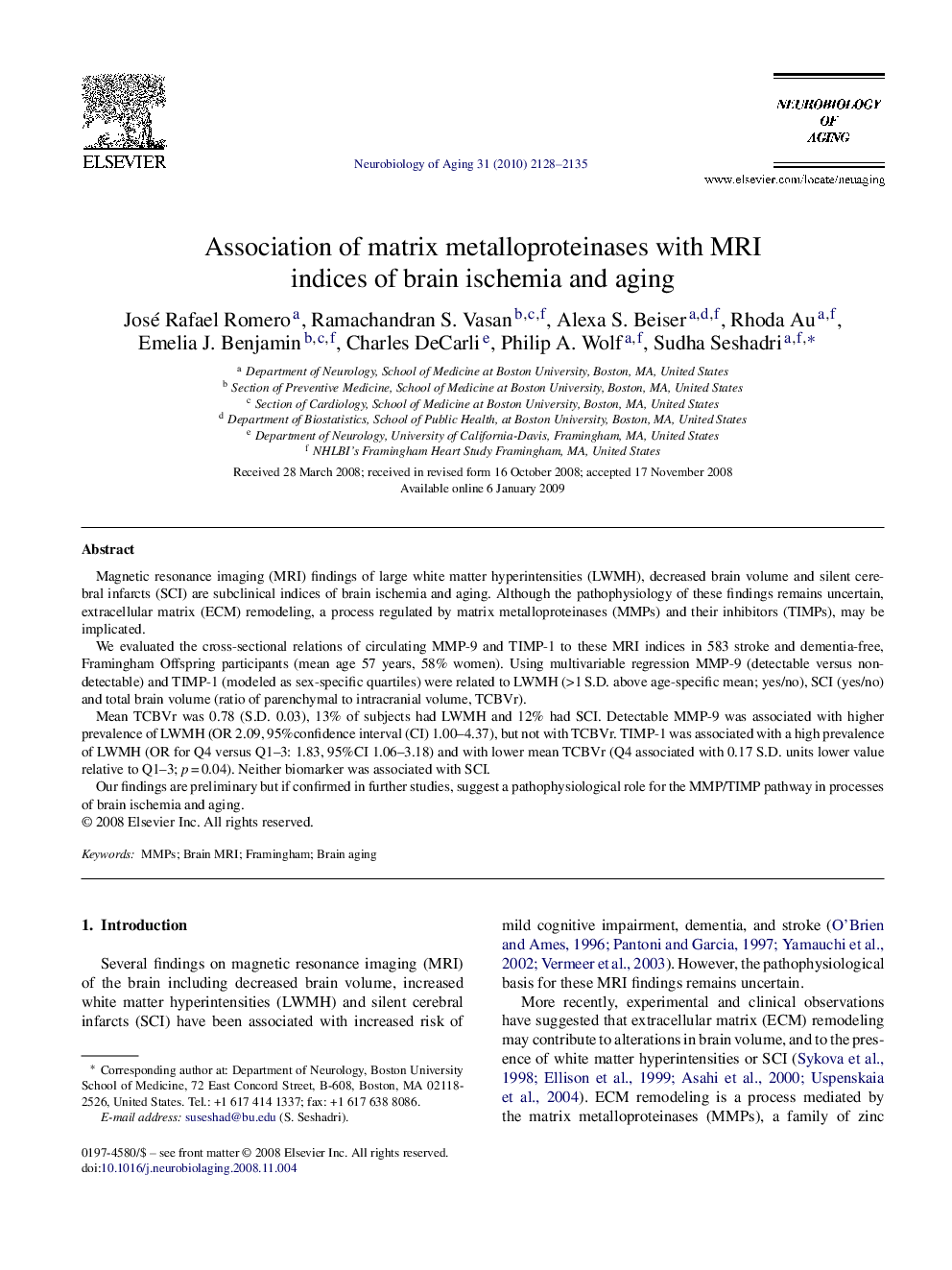| Article ID | Journal | Published Year | Pages | File Type |
|---|---|---|---|---|
| 331024 | Neurobiology of Aging | 2010 | 8 Pages |
Magnetic resonance imaging (MRI) findings of large white matter hyperintensities (LWMH), decreased brain volume and silent cerebral infarcts (SCI) are subclinical indices of brain ischemia and aging. Although the pathophysiology of these findings remains uncertain, extracellular matrix (ECM) remodeling, a process regulated by matrix metalloproteinases (MMPs) and their inhibitors (TIMPs), may be implicated.We evaluated the cross-sectional relations of circulating MMP-9 and TIMP-1 to these MRI indices in 583 stroke and dementia-free, Framingham Offspring participants (mean age 57 years, 58% women). Using multivariable regression MMP-9 (detectable versus non-detectable) and TIMP-1 (modeled as sex-specific quartiles) were related to LWMH (>1 S.D. above age-specific mean; yes/no), SCI (yes/no) and total brain volume (ratio of parenchymal to intracranial volume, TCBVr).Mean TCBVr was 0.78 (S.D. 0.03), 13% of subjects had LWMH and 12% had SCI. Detectable MMP-9 was associated with higher prevalence of LWMH (OR 2.09, 95%confidence interval (CI) 1.00–4.37), but not with TCBVr. TIMP-1 was associated with a high prevalence of LWMH (OR for Q4 versus Q1–3: 1.83, 95%CI 1.06–3.18) and with lower mean TCBVr (Q4 associated with 0.17 S.D. units lower value relative to Q1–3; p = 0.04). Neither biomarker was associated with SCI.Our findings are preliminary but if confirmed in further studies, suggest a pathophysiological role for the MMP/TIMP pathway in processes of brain ischemia and aging.
